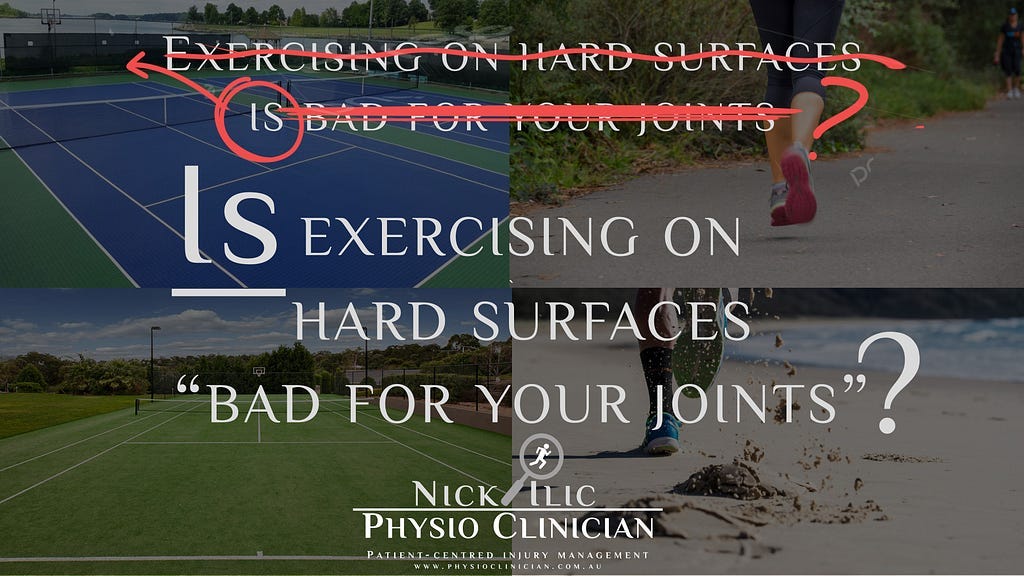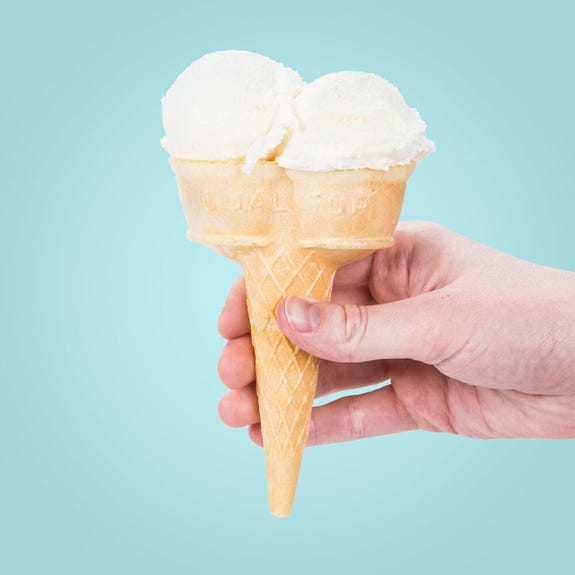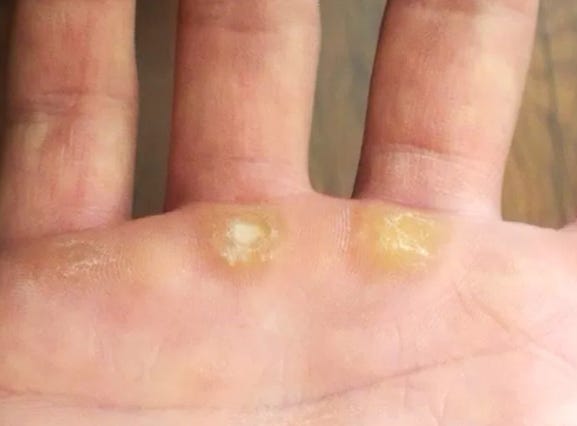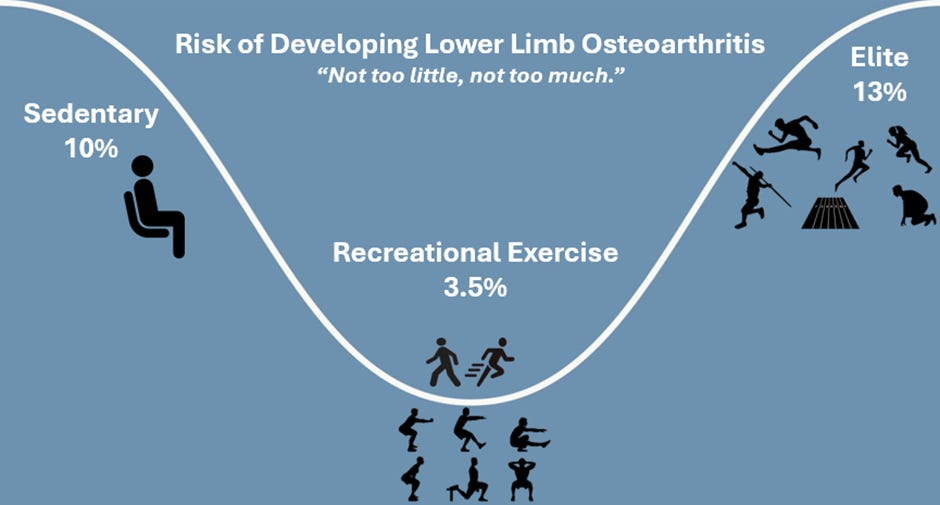This is a no-paywall blog post with insights I believe are valuable. If you find it useful, subscribe to my Substack for more in-depth content, exclusive case studies, and clinical insights.
Your support helps me continue sharing everything I’ve learned in the clinic with the world.
☕ Prefer a one-off thank you? Buy Me a Coffee.
This post is a guide only and should not be taken as medical advice. It does not replace assessment and recommendations from a registered and regulated healthcare professional.
As a physiotherapist, it’s common to hear patients express concerns about exercising on hard or firm surfaces. For example, a runner returning from a knee injury might worry about running on pavement and ask whether they should start on grass or sand to reduce impact. Similarly, tennis players often remark that “those hard courts are bad for your knees!” (or ankles) particularly those accustomed to synthetic grass courts — artificial grass with a sand overlay.
Surprisingly, there’s no evidence linking firm surface exercise to an increased risk of knee or ankle injuries.
In fact, exercising on a hard, stable surface can be beneficial. But why is this the case?
Forces Through Known Places: Ice Cream on the Cone
Imagine your knee as a double scoop of ice cream sitting perfectly on its cone.
The two “scoops,” or condyles, rest centred on the pair of menisci (medial and lateral meniscus) — cartilage that helps transmit forces efficiently through the knee joint. A stable surface ensures these forces pass predictably through conditioned areas of the joint that are happy to sustain these loads. In contrast, exercising on unstable or unreliable surfaces, like sand or long grass, can cause the joint to sustain loads through parts that are not conditioned to these loads, this can increase the risk of injury.
Conditioning Joints: ‘Blisters vs. Callouses’
Think of conditioning like growing callouses on your hands from manual work. I play guitar, and the tips of my fretting fingers are mildly calloused. It takes gradual exposure to build resilience, whereas sudden excessive load leads to blisters. Callousing is a positive adaptation by your body to a gradual increase in load.
For joints, the right amount of load progressed gradually can allow the joint bone-cartilage surfaces to condition. However, loads progressed too quickly can lead to injuries to these joint surfaces, much like manual work (e.g., paving) with the soft part of your hand leads to blisters.
This principle applies whether transitioning from firm to soft surfaces or vice versa — both require time for the body to adapt. For example, in the knee, overload to an unconditioned joint surface (e.g., running on a sandy beach) can lead to swelling, causing an effusion, and pain around the knee joint line.
The Goldilocks Zone of Joint Loading
Recreational runners have a lower risk of osteoarthritis compared to sedentary individuals. However, elite athletes with extreme training loads may face higher risks of developing osteoarthritis, as well as recreational athletes or “weekend warriors” who sustain significant joint injuries.
This reminds me of a quote I recently heard on a podcast: “We’re pretty sure exercise is good for you, but Sport? We’re still working that one out.”
Proper weight-bearing exercise within a “Goldilocks Zone” of moderate, varied, and consistent load is crucial for joint and bone health.
Different types of load are good for your Bones
Bone health experts suggest that good bone health relies on high-magnitude (higher load), quick loads (reduced contact time), and varied loads over the week (eg: doing a mix of exercise tasks).
Here’s a video explaining how these variables (magnitude, quick, variety) work
<a href="https://medium.com/media/9f00ccffbc16990413b18d1bb833cf02/href">https://medium.com/media/9f00ccffbc16990413b18d1bb833cf02/href</a>
Resistance training with weights ticks the “magnitude” box, light plyometric exercises (or running) tick the “quick” box, and mixing up exercises (e.g., avoiding the same distance run every time) ticks the “variety” box.
Beach Exercise: A Common Misstep
Exercising on soft, unstable surfaces like sand is significantly harder and can easily “blow up” knees or ankles for those unaccustomed to it. This often happens when patients overdo it during sporadic beach trips, proving it’s not about how hard the surface is but more about stability and conditioning.
Personal Anecdote: Synthetic Grass vs. Hard Courts
In my late 30s, I transitioned from synthetic grass tennis to hard courts.
Over several years, I conditioned my knees to this harder surface — despite three ACL reconstructions and a meniscectomy in my 20s.
Contrary to concerns from family and friends, I’ve found fewer injuries on the reliable hard court surface compared to the unstable synthetic grass. Gradual adaptation (with a dose of good technique and movement patterns) made this possible, allowing me to handle the high demands of advanced club-level tennis.
Tennis Surface & Injuries — The Evidence: It’s Not Better or Worse, Just Different
A large study on tennis surfaces and recreational tennis players found no increased injury risk between different surface types. The takeaway? Transitioning between surfaces requires gradual adaptation and careful load management.
It’s not the surface itself but how conditioned the body is for it. High performance tennis players however might find a more unstable and unreliable surface increases injury risk and impacts their development as players. More on why Tennis Hard Court creates better tennis players later in this blog.
Tennis-Specific: Synthetic Grass vs. Hard Courts
Warning: A “my opinion” and “in my experience” section.
The debate between synthetic grass and hard courts highlights differences in injury risk and player development. While injury rates among recreational players are similar, higher-performance players are more prone to acute injuries on synthetic grass due to its “slip-stick” footing leading to increased risk of injury with powerful deceleration and acceleration forces.
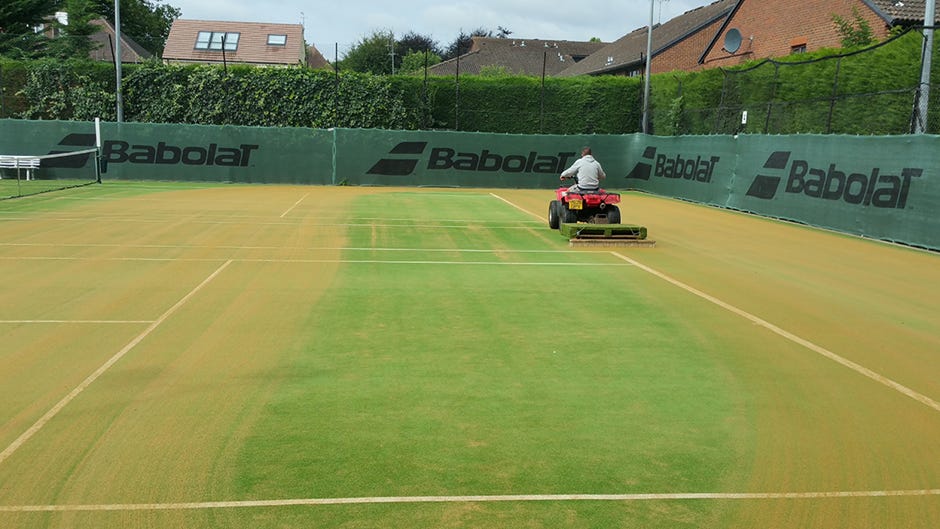
Synthetic grass is cost-effective, which is why its so common in Australian cities. But this surface limits stroke mechanics and movement efficiency — the ball bounce quicker, lower and the bonce can be unreliable. While hard courts provide consistent footing, predictable ball bounce, and an environment that supports long-term skill development.
A well-maintained clay court also provides an excellent environment for high performance player development as it is a more reliable surface than synthetic grass and the ball doesn’t ‘skip though’ as quickly, allowing for slide practice whilst giving the player time to get there in time and develop good long-term stroke mechanics.
Summary
Concerns about hard surfaces causing joint injuries are largely unfounded. Exercising on stable, firm surfaces can promote joint conditioning to that surface and improve bone health, while unstable surfaces like sand can increase stress on joints if the body isn’t prepared. Like all things, gradually expose yourself to different environments in small but regular doses and your body can adapt. Injuries often stem from abrupt changes or overexertion on unfamiliar surfaces, not the surface itself. Gradual adaptation, load management, and stability training are key to preventing injuries across all surface types.
Did this help you understand your pain better or make a more informed decision? If so, even a small contribution helps me keep content like this going.
This is high-value information that normally costs hundreds of dollars in a clinic—but here, it’s free for everyone.
☕ Buy Me a Coffee to say thanks, or become a paid subscriber—you’ll get access to more expert insights and can ask me questions about your pain anytime!
Tailor your Nick Ilic | Physio Clinician subscription:
You can customise which topics you receive updates for by selecting 'Manage Subscription' in your Substack options (in your browser), or by clicking 'unsubscribe' at the bottom of any email—don’t worry, it won’t unsubscribe you immediately! You'll then be able to choose your preferred sections:
✅ Patient Playbook
✅ Clinician’s Corner
✅ Research Reviews
✅ Clinician’s Compass
Choose what suits you best—I promise I won’t take it personally!





